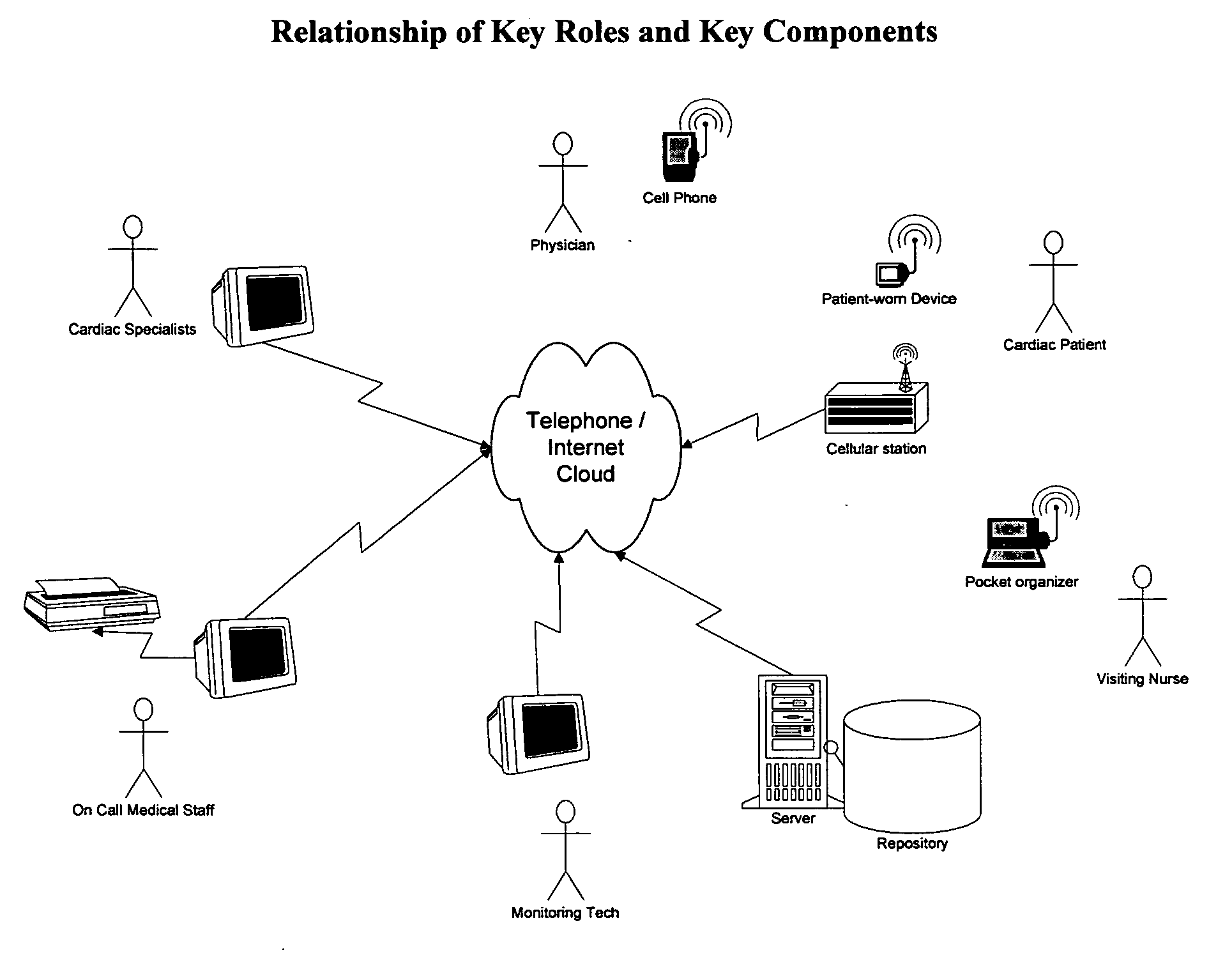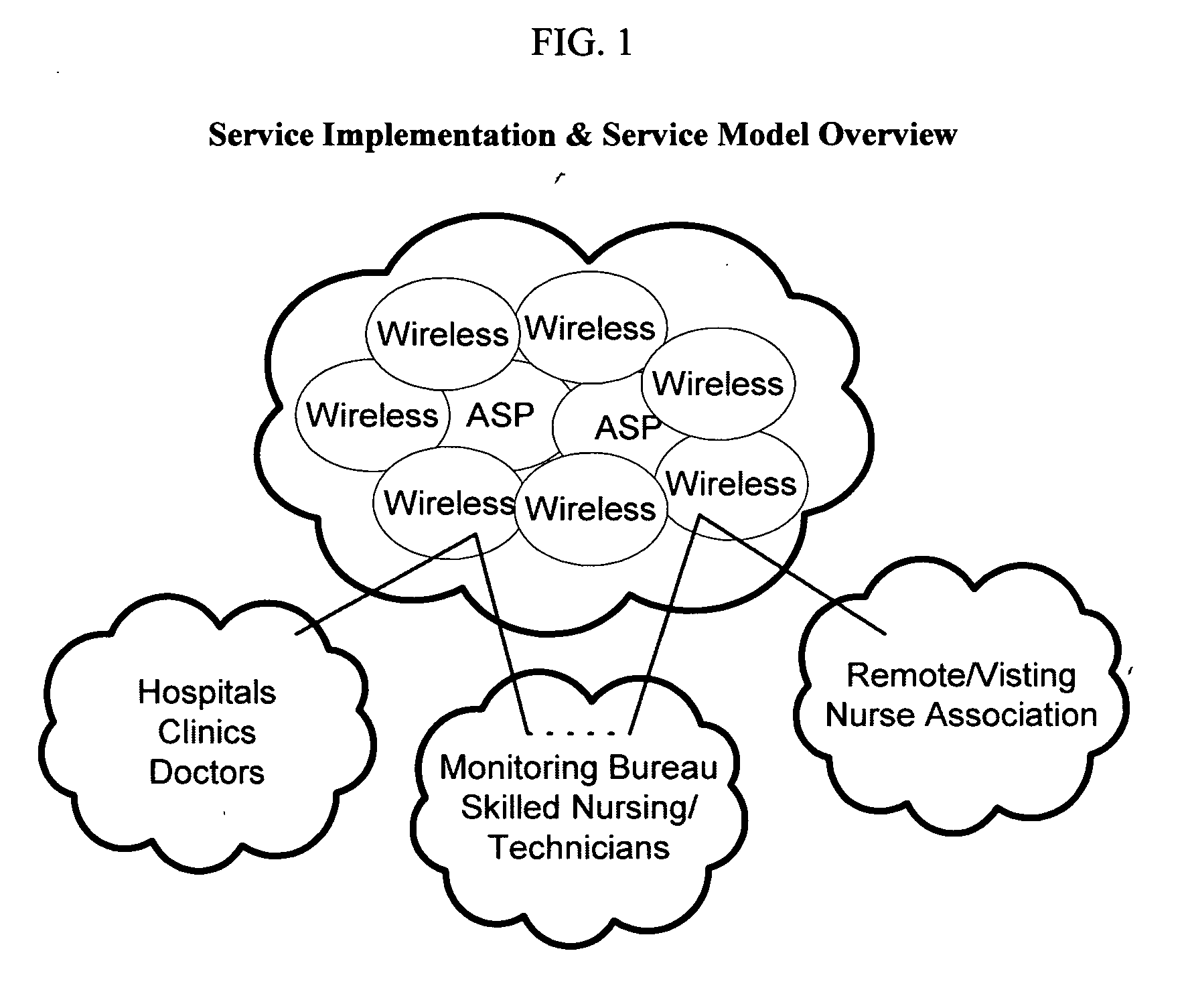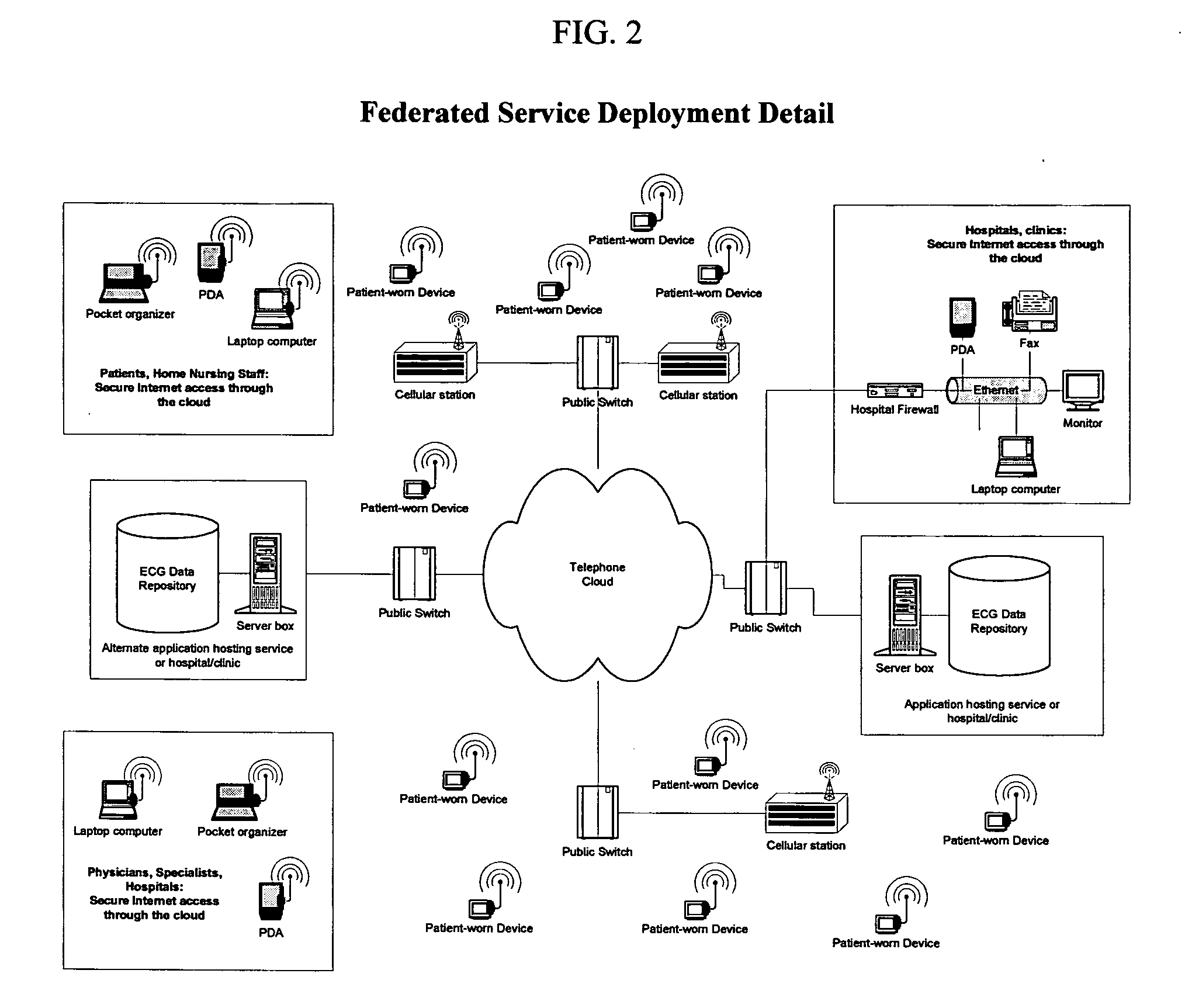Remote medical monitoring system
a medical monitoring and remote monitoring technology, applied in the field of remote medical monitoring systems, can solve the problems of not following patients everywhere, increasing the cost of the system, and ongoing costs over the lifetime of the system, and achieve the effect of effective step-down patient care and high scalabl
- Summary
- Abstract
- Description
- Claims
- Application Information
AI Technical Summary
Benefits of technology
Problems solved by technology
Method used
Image
Examples
Embodiment Construction
Service Delivery Model Element
[0057] The implementation of this solution begins with the service delivery model element. The model element has two key aspects, the human aspect and the machine aspect. The human aspect is multi-faceted whereas the machine aspect is a single facet formed by the intersection of interaction and equipment. A successful service delivery model requires both the human aspect and the machine aspect of the model.
[0058] In the many facets of the human aspect, two of them seem more important. These facets are the medical care team that provides the initial patient contact, ongoing patient monitoring, and expert services and the remote care team or visiting nurse facet that provides the personal touch and link between the patient, the equipment, and the medical monitoring team. Successful service delivery depends on a symbiotic relationship between the medical care team, the remote care team, and the patient. Studies have shown that people need human interacti...
PUM
 Login to View More
Login to View More Abstract
Description
Claims
Application Information
 Login to View More
Login to View More - R&D
- Intellectual Property
- Life Sciences
- Materials
- Tech Scout
- Unparalleled Data Quality
- Higher Quality Content
- 60% Fewer Hallucinations
Browse by: Latest US Patents, China's latest patents, Technical Efficacy Thesaurus, Application Domain, Technology Topic, Popular Technical Reports.
© 2025 PatSnap. All rights reserved.Legal|Privacy policy|Modern Slavery Act Transparency Statement|Sitemap|About US| Contact US: help@patsnap.com



